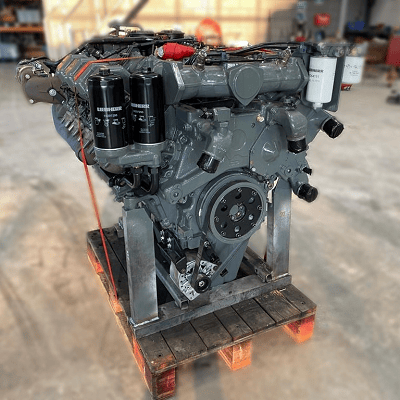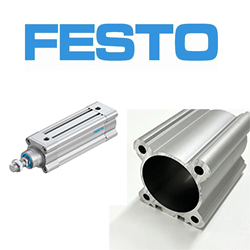The process of a dyno test on a Liebherr engine

When it comes to heavy machinery, reliability and power are paramount. Liebherr, a name synonymous with innovation and excellence in engineering, stands tall as a pioneer in the realm of heavy equipment and machinery. From towering cranes to robust excavators, Liebherr’s engineering prowess extends to the heart of these machines. We delve into the world of dyno testing a Liebherr engine, uncovering the meticulous process behind unleashing the raw power concealed within.
The foundation of excellence
Before we embark on the journey of dyno testing, it’s crucial to understand the foundation upon which Liebherr engines are built. With decades of engineering expertise and commitment to quality, Liebherr engines are crafted to withstand the most demanding environment and deliver unparalleled performance. Each component is meticulously designed and rigorously tested to ensure reliability, efficiency and longevity.
The process
1 Preparation: The engine undergoes meticulous preparation before being mounted onto the dynamo meter. This includes ensuring all connections are secure, fluids are filled to the appropriate levels, and sensors are properly calibrated.
2 Mounting: The engine is carefully mounted onto the dynamometer, a specialized device designed to simulate real-world operating conditions. Precision is paramount during this step to ensure accurate results.
3 Initial checks: Once mounted, a series of initial checks are conducted to verify proper alignment, connection integrity, and functionality of all engine systems.
4 Warm-up: The engine is started and allowed to warm up to operating temperature. This ensures consistent results and minimizes the risk of damage during testing.
5 Baseline testing: With the engine warmed up , baseline tests are conducted to establish initial performance metrics. This includes measuring power output, torque, fuel consumption, and emissions at various RPM levels.
6 Load testing: The engine is subjected to progressively increasing loads to simulate different operating conditions, such as idle, partial load and full load. This allows engineers to assess performance across the entire operating range and identify any potential issues or optimization.
7 Data analysis: Throughout the testing process, data is continuously collected and analyzed in real-time. Advanced instrumentation and software are used to monitor performance metrics and identify trends or anomalies.
8 Optimazation: Based on the data analysis, adjustments may be made to optimize engine performance. This could involve fine-tuning fuel injection timing, adjusting air-fuel ratios, or optimize turbocharger boost pressure.
9 Validation: Once testing is complete, the results are meticulously reviewed and validated against predetermined criteria and specifications. Any deviations or anomalies are thoroughly investigated to ensure accuracy and reliability.
10 Reporting: Finally, a comprehensive report is generated detailing the results of the dyno testing, including performance metrics, observations, and any recommendations for further optimization or refinement.
The outcome of dyno testing
Dyno testing a Liebherr engine is more than just a routine procedure – it’s a testament to the unwavering commitment to excellence that defines Liebherr’s engineering philosophy. By subjecting their engines to rigorous testing and analysis, Liebherr ensures that each engine delivers the uncompromising performance, reliability, and efficiency that customers expect.
In conclusion, dyno testing a Liebherr engine is not just about measuring power output. It’s about unlocking the true potential of these remarkable engines and ensuring they exceed expectations in the most challenging environments imaginable.
FESTO standard Aluminum Pneumatic Cylinder Tube for Pneumatic Cylinder

FESTO cylinder is composed of Cylinder Barrel, end cover, piston, piston rod, and sealing components.
The inner diameter of the FESTO cylinder barrel represents the magnitude of the cylinder output force. The piston should slide smoothly back and forth inside the cylinder, and the surface roughness of the cylinder should reach Ra0.8um. For steel pipe cylinders, the inner surface should also be plated with hard chromium to reduce frictional resistance and wear, and to prevent rusting. In addition to using high carbon steel pipes, the cylinder barrel material is also made of high-strength aluminum alloy and brass. Small cylinders use stainless steel pipes. Cylinders with magnetic switches or cylinders used in corrosion-resistant environments should use materials such as stainless steel, aluminum alloy, or brass for the cylinder barrel. FESTO cylinder piston adopts a combination sealing ring to achieve bidirectional sealing, and the piston and piston rod are connected by rivets without nuts.
FESTO cylinder end caps are equipped with intake and exhaust ports, and some also have buffer mechanisms inside the end caps. The end cover on the rod side is equipped with a sealing ring and a dust ring to prevent air leakage from the piston rod and prevent external dust from entering the cylinder. A guide sleeve is installed on the end cover of the rod to improve the guiding accuracy of the cylinder, withstand a small amount of lateral load on the piston rod, reduce the downward bending of the piston rod when it extends, and extend the service life of the cylinder. The guide sleeve usually uses sintered oil containing alloy and forward leaning copper castings. In the past, malleable cast iron was commonly used for end caps. To reduce weight and prevent rust, aluminum alloy die-casting was often used, and brass material was used for micro cylinders.
FESTO cylinder piston is a pressurized component in the cylinder. To prevent air leakage between the left and right chambers of the piston, a piston sealing ring is installed. The wear-resistant ring on the piston can improve the guidance of the cylinder, reduce the wear of the piston sealing ring, and reduce frictional resistance. Wear resistant rings are made of materials such as polyurethane, polytetrafluoroethylene, and synthetic resin for fabric clamping. The width of the piston is determined by the size of the sealing ring and the necessary length of the sliding part. The sliding part is too short, which can easily cause early wear and jamming. The materials commonly used for pistons are aluminum alloy and cast iron, while pistons for small cylinders are made of brass. The FESTO cylinder piston rod is the most important load-bearing component in the cylinder. High carbon steel is usually used, with a surface treated with hard chrome plating, or stainless steel is used to prevent corrosion and improve the wear resistance of the sealing ring. FESTO cylinder seals: The sealing of components in rotary or reciprocating motion is called dynamic sealing, while the sealing of stationary parts is called static sealing.
Festo Pneumatic Cylinder Tubing,Festo Pneumatic Cylinder Tube,Festo Pneumatic Cylinder Pipe,Festo Pneumatic Cylinder
Foshan Weiyingjia Technology Co., Ltd , https://www.wyspneumatic.com